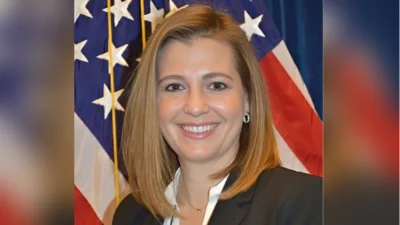Tim Alexander, Senior Director, Business Research & Analysis | LinkedIn
Tim Alexander, Senior Director, Business Research & Analysis | LinkedIn
Newly released data from the U.S. Census Bureau indicates that the St. Louis metropolitan area has recorded the highest percentage increase in foreign-born population among the 30 largest metro areas in the United States from 2022-2023. The 15-county bi-state region added more than 30,000 foreign-born residents during this period, marking a significant milestone.
“These numbers show that the focused and intentional work taking place to make our metro a destination for immigrants is paying major dividends,” said Jason Hall, CEO of Greater St. Louis, Inc. “Winning this decade means getting our population increasing and shifting the trajectory of our metro into growth mode, and this data shows that the hard work led for years by partners like the International Institute of St. Louis and the Mosaic Project is paying off. But so much work is still to be done, and we must strengthen our support for them to make sure that this growth is sustained for years to come.”
The data was part of the U.S. Census Bureau’s American Community Survey (ACS), which provides vital information about the country and its people. Saint Louis University demographer and sociology professor Ness Sandoval noted that this one-year increase labels the St. Louis region as a growing metropolitan area. “We're in the league of Charlotte, Nashville, and Orlando,” he said.
Key findings from ACS data include:
- From 2022-2023, the St. Louis metropolitan area saw a 23.2% increase in its foreign-born population.
- This increase—from 129,604 in 2022 to 159,710 in 2023—puts St. Louis at the top of rankings for growth in foreign-born population among the nation’s largest metro areas.
- The region’s Latino/Hispanic population saw a notable increase of nearly 14,000 year-over-year.
- For the first time in recent years, the metro’s Black population increased.
“Global talent makes a positive local economic impact on workforce and neighborhood vitality when we see increases like this coming to the St. Louis region from international students, transferred business leaders, families being reunited, and increased refugees,” said Betsy Cohen, Executive Director of the St. Louis Mosaic Project.
Greater St. Louis Inc.'s mission includes supporting organizations such as International Institute, Mosaic Project, and others leading efforts to bring more immigrants to the region. Key business leaders including Jerry Schlichter and David Kemper have been at forefront of these initiatives.
“Attracting smart, ambitious people from all over world to St. Louis is vital for our long-term prosperity,” said Kemper, Executive Chairman of Commerce Bancshares Inc., and Greater St. Louis Inc., board member.“While we should celebrate these numbers and growth we have seen,we must also double down on our efforts to ensure this growth is sustained.”
To help visualize progress toward newly set inclusive economic growth targets,GSL launched STL 2030 Progress last year.STL 2030 Progress measures metro's progress on inclusive growth—including population growth—and was developed by GSL with representatives from all counties in metropolitan area.
Media Contact: Tony Wyche | 314-398-9991 | Tony@GreaterSTLInc.com



 Alerts Sign-up
Alerts Sign-up